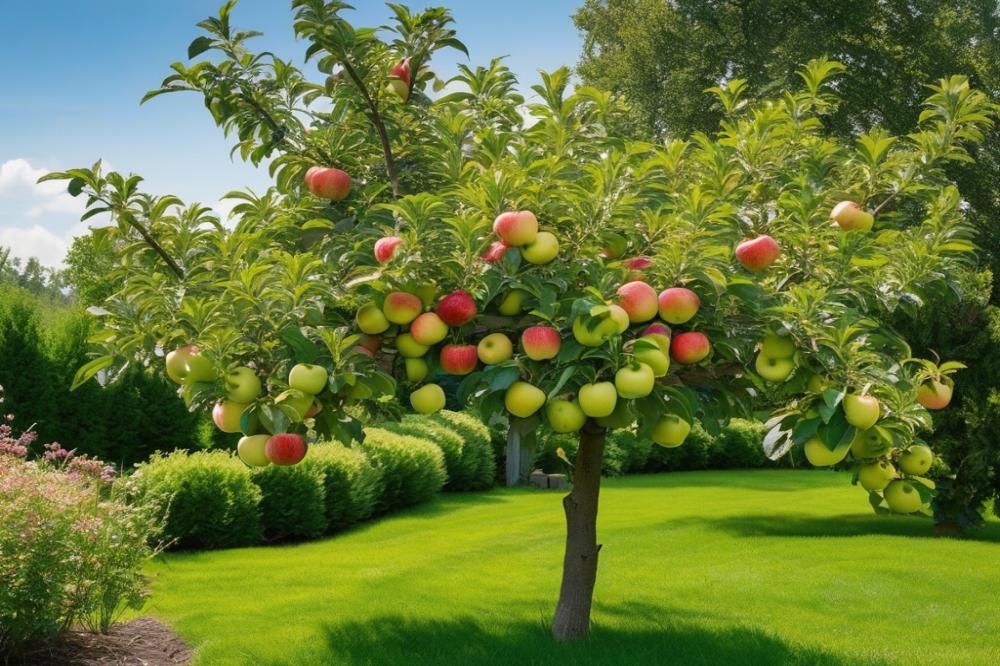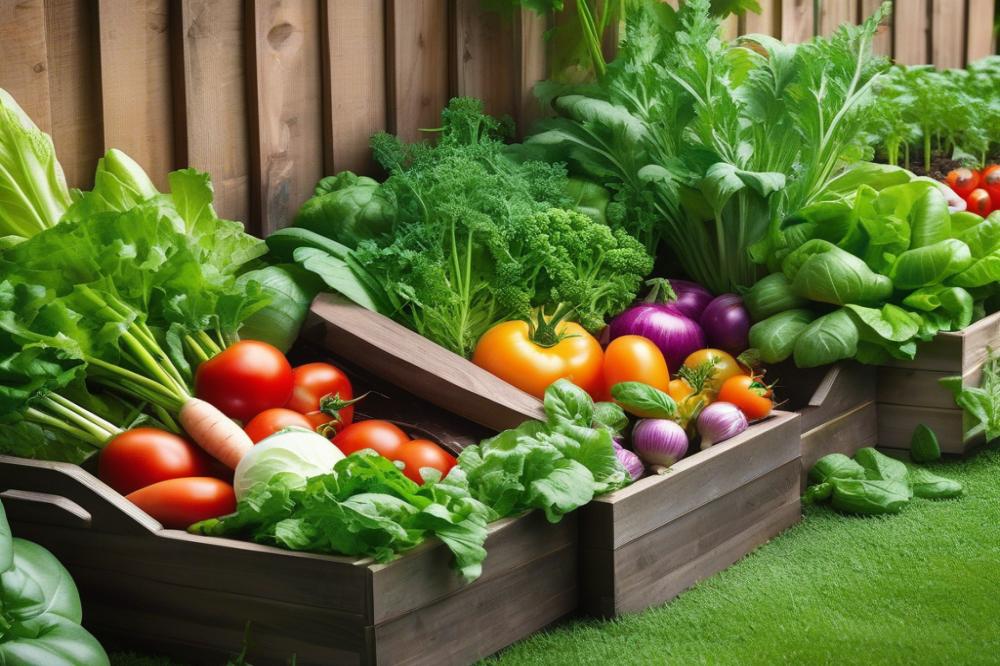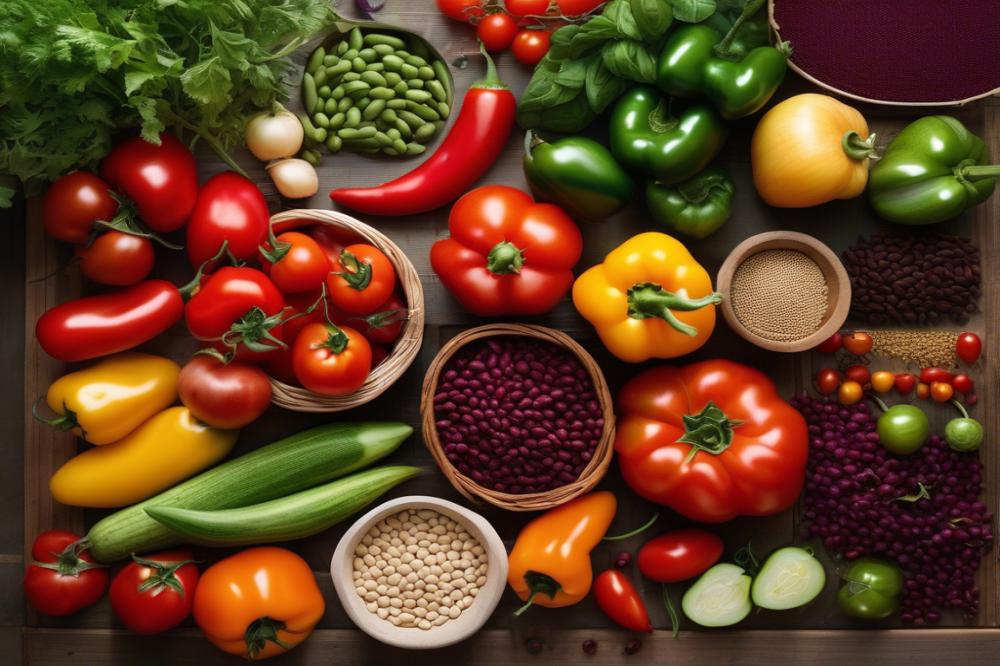Overview of Newton Pippin Apples
Newton Pippin Apples hold a special place in the world of fruit. Known for their crisp texture and tart flavor, these apples are loved by many. They are a favorite among apple enthusiasts and have a rich history dating back to the 18th century. Their unique taste makes them perfect for eating fresh or using in pies and ciders. Cultivating this apple variety can be rewarding, both for experienced gardeners and beginners alike.
Importance of growing apples in Home Gardens

growing apples can significantly enhance any home garden. Many people find joy in caring for fruit trees and watching them thrive. Cultivating your own apples allows for access to fresh, nutritious fruit right in your backyard. Homegrown apples often taste better than those from the store. Furthermore, they can be grown using organic farming methods, ensuring minimal pesticide use and healthier produce. This practice encourages sustainable gardening as well.
Benefits of Cultivating This Specific Apple Variety

A variety such as Newton Pippin provides unique benefits. Its excellent flavor makes it a delightful choice for many recipes. This apple also tends to store well, meaning that careful harvesting can lead to a supply of apples throughout the winter months. Climate conditions that favor this tree’s growth can determine success in cultivation. Understanding soil requirements is crucial for healthy trees as well. Effective pruning techniques contribute to better air circulation and fruit production. Managing pests will also play an important role in the apple cultivation process. Successful gardeners often share valuable planting tips to help others achieve similar success in their gardens.
Understanding Newton Pippin Apples

Description and characteristics of the apple
Newton Pippin apples are known for their round, green skin that often takes on a yellowish hue when fully ripe. Their texture is crisp, offering a satisfying crunch with every bite. This particular apple variety typically features a balanced blend of sweetness and acidity. The flavor is often described as aromatic and refreshing, making it a favorite among apple lovers. As they mature, these apples can develop a slight tang, adding complexity to their taste profile. When grown properly, they produce fruit that is ideal for eating fresh or using in recipes.
History and origins of Newton Pippin
This apple originated in the early 18th century in the U.S., specifically in Newtown, New York. Historic records suggest that early settlers were the first to cultivate this variety. Over time, it gained popularity not just in America but across the Atlantic as well. In fact, Newton Pippins were prized by famous figures, such as Thomas Jefferson, who appreciated their flavor. Their longstanding presence in orchards reflects a strong heritage in growing apples. Today, they are still celebrated in many agricultural circles, particularly among those dedicated to organic farming.
Flavor profile and culinary uses
The flavor of Newton Pippin apples lends itself well to various culinary applications. Ideal for pies and tarts, they hold their shape during baking while contributing a delightful taste. Fresh, they can be sliced and added to salads or enjoyed as a snack. Their crispness makes them a great choice for curing a sweet craving without too much indulgence. Additionally, these apples can be juiced or made into cider, showcasing their versatility. When contemplating how to use this apple, consider its role in elevating both sweet and savory dishes.
For those interested in planting, understanding soil requirements and climate conditions is essential. Proper care, including pest control and pruning techniques, will lead to a successful harvest season. Following planting tips specific to this apple variety can greatly impact the growth and yield of fruit trees. With the right attention, Newton Pippin apples can offer a rewarding cultivation experience.
Soil Requirements for Newton Pippin Apples
Ideal Soil Types for Growing Apples
Rich, loamy soil is the best choice for growing apples. This type of soil provides the necessary nutrients for healthy fruit trees. Clay and sandy soils can be challenging, but with the right amendments, they can work as well. Consistency in soil structure allows roots to thrive and absorb moisture effectively. For optimal results, aim for soil that is well-aerated.
Importance of Soil Drainage and pH Levels
Soil drainage plays a crucial role in cultivating healthy apple trees. Poor drainage can lead to waterlogged roots, suffocating them. Ideally, soil should have a pH level between 6.0 and 7.0. This range promotes nutrient availability. Regular testing of soil pH helps in maintaining the right balance. Adjustments can be made using lime to raise pH or sulfur to lower it.
Organic Farming Practices for Soil Health
Organic farming practices contribute significantly to soil health. Using compost enriches the ground naturally and enhances its structure. Crop rotation also helps prevent nutrient depletion over time. Implementing effective pest control reduces the need for harmful chemicals. Additionally, engaging in proper pruning techniques supports better air circulation. These practices not only benefit the soil but also foster a healthier apple variety. Planting tips should also include enriching the soil before planting to ensure strong root development.
Climate Conditions for Successful Growth
Optimal climate for Newton Pippin cultivation
Growing apples requires a certain type of climate. Newton Pippin thrives in regions with well-defined seasons. Cool winters allow trees to enter dormancy, which is critical for fruit production. Warm summer temperatures aid in fruit ripening. Ideally, these trees prefer a temperate climate. Areas with moderate rainfall create an ideal atmosphere. This apple variety does particularly well in regions like the Northeast and Pacific Northwest of the United States.
Temperature ranges and frost considerations
Temperature plays a significant role in fruit development. Daytime temperatures between 70°F and 80°F promote healthy growth. Nights should be cooler, around 50°F to 60°F, to protect the fruit’s quality. Farmers must keep an eye on late spring frosts. Such frosts can damage blossoms and reduce yields. Protective measures, like covering trees, can help minimize frost damage. It’s also smart to plant under taller trees or near structures for some natural insulation.
Regional adaptability of the apple variety
This apple variety shows adaptability but does have its limitations. Regions with extreme heat might not support healthy growth. Likewise, areas with overly wet conditions can lead to root rot. Soil requirements include well-draining options with good organic matter. Proper pest control methods are essential in various environments. Each local climate may affect cultural practices, including pruning techniques. The climate’s influence extends through the harvest season as well, impacting when to pick the apples. Overall, understanding local weather patterns significantly helps in successful orchard management.
Planting Tips for Newton Pippin Apples
Choosing the right location in your garden
Selecting a good spot is crucial for growing apples. Look for a location that receives full sunlight for at least six hours a day. The right climate conditions can make a significant difference in the development of the tree. Avoid areas where water tends to accumulate, as apples need well-draining soil. The space should also have good air circulation to minimize disease. Additionally, consider planting away from larger trees that may create shade.
Best time to plant apple trees
Timing plays an important role in the success of fruit trees. Early spring or late fall are optimal times for planting apple varieties like Newton Pippin. This timing allows the roots to establish before the heat or frost arrives. In colder regions, late spring may be the only option, as it reduces the risk of frost damage. Always check local weather and planting calendars to find the best window.
Step-by-step guide to planting
Start with preparing the site. Remove weeds and rocks from the planting area. Dig a hole that is about twice as wide and the same depth as the root ball of the tree. Next, mix organic compost with native soil to improve soil requirements. Place the tree in the center of the hole, ensuring that the graft union is above ground level. Fill in around the roots with the soil mixture and water well to eliminate air pockets. Stake the tree if necessary, particularly in windy areas. Apply mulch around the base to retain moisture. Regularly check for signs of pests as they may affect young trees. Pruning techniques can come later in the season when the tree has established. Watch for the harvest season, as timing is key for picking the fruit at its best.
Pruning Techniques for Healthy Trees
Importance of Pruning in Apple Tree Care
Pruning is crucial for maintaining healthy fruit trees. This practice helps manage tree size and encourages stronger growth. When you cut away dead or diseased branches, the overall health of the apple tree improves. Better air circulation and sunlight penetration come from proper pruning. That leads to healthier leaves and better fruit production. Growing apples successfully hinges on taking care of these aspects. Regular maintenance through pruning also aids in pest control, keeping unwanted insects at bay.
Recommended Timing and Methods for Pruning
Timing plays a significant role in effective pruning. Late winter or early spring is the ideal time for most apple varieties. During this period, trees are still dormant, making it easier to see their structural framework. However, avoid heavy pruning when buds swell; this can harm tree health. When it comes to methods, removing crossing branches is a must. This allows sunlight to reach all areas of the tree. Make clean cuts at a slight angle to prevent water collection. Using sharp tools aids in achieving a clean cut, which is vital for quick healing.
How to Shape and Maintain Tree Growth
Shaping trees helps maintain a productive and manageable structure. Focus on creating a central leader—this is the main trunk that supports the rest of the tree. Space out branches to allow growth and sunlight access. The goal is to develop an open canopy, promoting air flow throughout the tree. Otherwise, overcrowding can lead to disease. Monitoring the growth regularly after pruning is essential. Pay attention to any new shoots and suckers that appear. Removing these promptly helps the tree focus its energy on producing fruit rather than excess growth. Soil requirements should also be considered when planning pruning, as healthy soil supports robust tree health throughout the season.
Pest Control Methods
Common Pests and Diseases Affecting Apple Trees
Growing apples can be rewarding but comes with challenges. Many pests threaten the health of fruit trees. Aphids often appear in spring, sucking sap from leaves. Their presence can lead to a sticky residue called honeydew. Another common threat is the codling moth. This pest burrows into the developing fruit, causing damage. Fungal diseases, like apple scab and powdery mildew, can also affect the trees. Excess moisture and poor air circulation increase their risk. Understanding these threats is key to healthy orchards.
Preventive Measures for Organic Pest Management
Practicing organic farming can help avoid chemical pesticides. Start with selecting resistant apple varieties that weather pests better. Proper soil requirements play a role too; healthy soils support stronger plants. Using companion planting with flowers can attract beneficial insects. These allies prey on harmful pests. Regular pruning techniques also keep trees healthy. Aim for good air circulation by trimming overgrown branches. Maintain a clean orchard by removing fallen fruit and debris. Such actions can drastically reduce pest populations before they even appear.
Effective Treatment Strategies for Infestations
When pests show up despite preventive measures, quick action is necessary. Insecticidal soaps can be a safe choice for many soft-bodied insects. Neem oil is another effective option for various infestations. It disrupts the life cycle of pests without harming beneficial insects. For diseases, applying an organic fungicide might be needed when symptoms arise. Keeping a close eye on trees throughout the harvest season helps in making timely interventions. Monitoring the weather can also aid in planning treatments.
Consider introducing traps for pests like the codling moth early in the season. These traps can catch adults before they lay eggs. Different strategies can include promoting biodiversity in the crop environment. Encourage naturally occurring predators, like ladybugs or lacewings. Overall, a combination of these methods can lead to successful control of pests in your apple orchard.
Harvest Season and Fruit Management
Identifying the Right Time to Harvest Newton Pippin Apples
The harvest season for Newton Pippin apples typically falls from late September to October. Observing the color of the skin is important. Apples should be a rich green with hints of yellow when they are ready. A gentle twist can help test ripeness. If the fruit separates easily from the branch, it’s time to pick. Monitoring the temperature can also guide you. Warmer days and cooler nights contribute to the best flavor in this apple variety.
Best Practices for Picking and Storing Apples
Picking apples requires careful attention. Always use both hands to avoid bruising the fruit. Gather the fruit into baskets rather than dropping them. Consider wearing gloves to protect your hands and the apples. Once harvested, storing apples properly is critical for maintaining quality. A cool, dark place works best. Ensure good ventilation around the apples to prevent spoilage. Placing them in perforated plastic bags can also aid in their freshness.
Post-Harvest Care and Preparation
After picking, check each apple for blemishes or signs of rot. Discard damaged fruit to prevent other apples from spoiling. Washing them gently with water helps remove any dirt or residue. Organize your apples by size and ripeness. This organization allows for better storage and consumption. Knowing the right temperature to keep apples is crucial; aim for around 32°F. Using these tips will help maintain your harvest for longer. Regularly check stored apples to catch any early signs of spoilage. Effective pest control practices during the growing season also play a key role in post-harvest success. Following the right pruning techniques can help improve airflow, which is beneficial all year round.
Final Thoughts on Cultivating Newton Pippin Apples
Understanding the essentials of growing apples can make a world of difference in your gardening journey. Key points like selecting the right location, providing proper spacing, and ensuring good air circulation are vital for fruitful yields. Regular pruning is also important for maintaining the health of your trees. This variety is known for its crisp texture and delicious flavor, making it a worthwhile endeavor for any gardener.
For those who wish to take on the challenge, the rewards are plentiful. Growing these fruit trees can lead to a bountiful harvest, providing fresh apples for pies, sauces, or just enjoying straight from the tree. With patience and care, you can transform your garden into a productive space filled with tasty treats.
Ultimately, the joy of cultivating these apples lies in the connection you build with your garden. Celebrating the time spent nurturing your plants can enhance your appreciation for the end results. Taste your labor, share with friends, and savor the fruits of your hard work.



